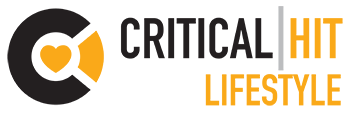Retirement might feel like a distant dream – something to worry about later. But here’s the reality – your 30s are the most important decade for setting yourself up for financial freedom. The decisions you make now will determine whether you’re scrambling to catch up in your 50s or enjoying a smooth path to a comfortable, stress-free retirement.
The good news? Time is on your side. With a solid strategy and a few smart financial moves, you can take full advantage of compounding interest, tax-efficient investment options, and strategic debt management to secure your future.
Here’s how to make your 30s the decade that sets the foundation for a successful retirement.
- Hire a Financial Planner
If you haven’t already, now is the time to bring in a professional. A financial planner can help you optimize your retirement strategy, ensuring you’re taking advantage of tax-saving opportunities, investing wisely, and structuring your finances for long-term growth, according to LH Financial.
A great financial planner does more than just pick investments. They help you create a comprehensive plan that includes:
- Tax-efficient investing. Make sure you’re maximizing contributions to tax-advantaged accounts and taking advantage of deductions. Proactive tax planning is probably the best way to preserve and grow your wealth, yet it’s also the most overlooked by the average person in their 30s. Be the one to break that trend.
- Retirement account selection. Determine the best mix of employer-sponsored plans, IRAs, and brokerage accounts based on your income and goals. Your advisor can help you diversify appropriately.
- Debt management. A good financial planner will help you balance paying off debt with investing for the future. They can show you which to prioritize right now, based on factors that are specific to your situation.
- Risk assessment. An advisor is tasked with making sure your portfolio is diversified and aligned with your long-term financial goals.
You don’t need to be wealthy to work with a financial planner. In fact, hiring one now ensures that you’re making the smartest possible moves while you still have decades to let your money grow.
- Maximize Employer-Sponsored Retirement Accounts
If your employer offers a 401(k) or similar retirement plan, you should be contributing as much as possible – especially if they offer a company match. That’s free money, and not taking advantage of it is like leaving part of your salary on the table.
In 2024, the contribution limit for a 401(k) was $23,000 (plus an additional $7,500 if you’re 50 or older). If you’re not maxing out, at least aim to contribute enough to get the full employer match.
Beyond that, consider increasing your contributions each year as your income grows. The earlier you invest, the more time your money has to compound, turning even small contributions into a substantial retirement fund over time.
- Open and Maximize an IRA
Even if you have a 401(k), you should consider opening an Individual Retirement Account (IRA) to supplement your savings. There are two main types:
- Traditional IRA: Contributions may be tax-deductible, lowering your current taxable income. However, withdrawals in retirement are taxed as regular income.
- Roth IRA: You contribute after-tax money, meaning withdrawals in retirement are tax-free. This is an excellent option if you expect your tax rate to be higher in the future.
If your income is too high to contribute directly to a Roth IRA, you can still take advantage of the backdoor Roth IRA strategy, which allows you to convert a traditional IRA to a Roth, avoiding income limits.
- Diversify Investments for Growth and Stability
Saving for retirement is only part of the equation – growing your money is just as important. While employer-sponsored retirement accounts and IRAs are great starting points, you also need a diversified mix of investments to balance risk and maximize returns over time. The right investment strategy ensures that your money not only keeps up with inflation but also works for you, building long-term wealth.
Stocks should make up a significant portion of your portfolio in your 30s, as they offer the highest potential for growth. Since you have decades before retirement, you can afford to ride out market fluctuations and take advantage of compounding returns. Investing in a mix of individual stocks, exchange-traded funds (ETFs), or index funds allows you to spread out risk while still benefiting from market gains.
Bonds, while not as exciting as stocks, provide stability and consistent income. They are particularly useful in protecting your portfolio from major downturns. Though your 30s are generally a time to be more aggressive with investments, having some exposure to bonds can provide a cushion when the stock market is volatile.
Real estate is another strong option for building wealth. Owning property – whether as a primary residence, rental property, or through real estate investment trusts (REITs) – can provide both income and long-term appreciation. Real estate investments tend to move independently of the stock market, making them a valuable addition to a well-rounded portfolio.
Build for the Future
Your 30s might feel like a destination, in some sense, but it’s important to remember that this is only the start. By making smart choices today, you can plan ahead for decades of financial success down the road.






















